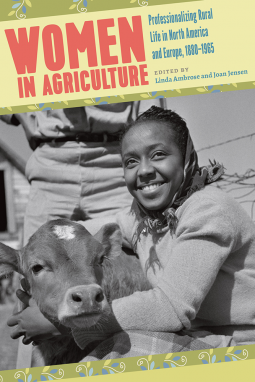
Women in Agriculture
Professionalizing Rural Life in North America and Europe, 1880-1965
by Linda M. Ambrose & Joan M. Jensen, eds.
This title was previously available on NetGalley and is now archived.
Send NetGalley books directly to your Kindle or Kindle app
1
To read on a Kindle or Kindle app, please add kindle@netgalley.com as an approved email address to receive files in your Amazon account. Click here for step-by-step instructions.
2
Also find your Kindle email address within your Amazon account, and enter it here.
Pub Date Mar 01 2017 | Archive Date Mar 01 2017
University of Iowa Press | University Of Iowa Press
Description
The contributors to Women in Agriculture examine how rural women’s expertise was disseminated and how it was received. Through these essays, readers meet subversively lunching ladies in Ontario and African American home demonstration agents in Arkansas. The rural sociologist Emily Hoag made a place for women at the US Department of Agriculture as well as in agricultural research. Canadian rural reformer Madge Watt, British radio broadcaster Mabel Webb, and US ethnobotanists Mary Warren English and Frances Densmore developed new ways to share and preserve rural women’s knowledge. These and the other women profiled here updated and expanded rural women’s roles in shaping their communities and the broader society. Their stories broaden and complicate the history of agriculture in North America and Western Europe.
Contributors:
Linda M. Ambrose, Maggie Andrews, Cherisse Branch-Jones, Joan M. Jensen, Amy McKinney, Anne Moore, Karen Sayer, Margreet van der Burg, Nicola Verdon
Advance Praise
“In Women in Agriculture, Joan Jensen and Linda Ambrose have brought together a wealth of information about rural women food professionals. Diverse in its scope and ambitious in its reach, the book will be useful to a wide variety of scholars in fields as diverse as history, women’s studies, and family and consumer science.”—Pamela Riney-Kehrberg, Iowa State University
“Contributors to this volume investigate an understudied topic: the role of professional women in modern Western agriculture. Their essays illuminate the partnership between women agriculturalists and the home economists, broadcasters, political activists, scholars, and other professionals who worked alongside them to improve food production and the quality of rural life.”—Katherine Jellison, author, Entitled to Power: Farm Women and Technology, 1913–1963
Available Editions
| EDITION | Paperback |
| ISBN | 9781609384722 |
| PRICE | $65.00 (USD) |
| PAGES | 272 |
Featured Reviews
 Diana T, Reviewer
Diana T, Reviewer
Book received from NetGalley.
The essays in this book show the changing roles of women in agriculture especially in the early to mid-1900's. I think the main reason this book struck a chord with me is the fact that many of the essays could be discussing my grandmother, mother as well as many of my aunts who grew up on farms. I spent quite a bit of my childhood on various family farms starting about a decade after the essays in the book end and I can see the changes in farming for women still continuing through that era.



